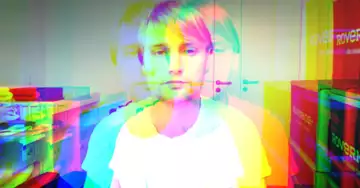The founder of a so-called decentralized stablecoin believes that the collapse of Terra is a wake-up call for those who have not yet realized the risks of another type of stablecoin - unsecured, algorithmic stablecoins.
Rune Christensen, a Danish entrepreneur who founded MakerDAO, also said the crypto industry should enforce strict standards for stablecoins - such as collateral requirements - to prevent another financial crisis like UST's implosion, which wiped out $40 billion of the coin's value in less than a week.
For Christensen, it may be convenient to say that. His stablecoin platform, which launched in 2014 and is now overseen by a decentralized autonomous organization (DAO), has always required users to raise real capital if they want to mint their token, the dai, which is pegged to the U.S. dollar.
"The natural endpoint is that algorithmic stablecoins are ... collateralized because that's the only way to protect users," Christensen said Thursday on CoinDesk TV's "First Mover."
MakerDAO was the first Ethereum-based tool that allowed anyone to mint dollar proxies by collateralizing their cryptocurrency. For every Dai in circulation, there is roughly double the amount of crypto held in reserve.
Terra, on the other hand, tried a different model. Instead of holding assets in reserve, it used an algorithm and a related free-floating cryptocurrency called LUNA to try to keep its synthetic dollar value, UST, in line. Like all other "algorithmic stablecoins," UST met a disastrous end.
Christensen said it was obvious to others in the community that Terra would collapse long before it did.
"It was abundantly clear and common knowledge that this model just wasn't working," Christensen said.
That didn't stop Terra's founder, Do Kwon, from attacking Maker and its stablecoin, at one point even making the grand claim: "By my hand, $DAI will die." About a month after that statement, at the height of Terra's success, Kwon's network entered its fateful "death spiral."
Boom and bust
According to Christensen, Terra operated like a Ponzi scheme. It was a project that benefited from rising prices, mass speculation, and Kwon's boasting. Eventually, any massive boom must fail.
"The people in the community who were affected by it created a kind of community bond and an intangible value that transcended the economic aspects of the scheme," he said.
Christensen said he expected Terra to collapse, but was devastated when it actually happened.
"I wasn't exactly in the mood to say, 'I told you so.' It was a human tragedy," he said.
The blame clearly lies with Terra and its managers, especially the bombastic Do Kwon, the project's founder. Terra's leadership hid risks and developed products intentionally designed to lure investors, such as the Anchor Protocol, which offered an unsustainable 20% return on UST holdings.
"They took advantage of services that promised them a high return and then concealed where they got it," Christensen said.
Terra's collapse could have a longer aftermath, and users may have concerns about investing in stablecoins backed by volatile assets - like dai.
In dai's case, the currency is over-collateralized and backed directly by ETH, USDC and other cryptocurrencies.
"No one has to trust anyone. You can see for yourself that all the collateral is there," he said, referring to the benefits of the blockchain.
Other stablecoins managed by companies, such as USDC, offer transparency through regular disclosures and seem to be an easier choice. He also said that Tether, a controversial centralized stablecoin, is "probably solid."
A new proposal to forge the Terra blockchain to try a different approach, including adding collateral and other fail-safes, could point to a bigger message about community resilience and cohesion, but the sentiment may be a little too late.
"There is a risk that it won't work because ... there are political fractures," Christensen said. He added that a plan to redistribute Terra's remaining assets to small farmers is fraught with indecision and mismanagement.
"Regardless of what the community tries to do, the main goal should be to compensate UST holders," he said. He added that some so-called crazies may suffer from a kind of "Stockholm syndrome," but that again may point to the inherent resilience and value of "decentralized communities.
None of this means that algorithmic stablecoins are dead. But a safer option might be to treat them a bit more like traditional financial assets. When it comes to regulating algorithmic stablecoins, Christensen could envision issuers eventually having to meet a collateral threshold, much like banks. Or makers.

